Center for Interdisciplinary Postgraduate Studies /University of Sarajevo |
| M.A.COURSE: "War Crimes, Genocide and Memories / The Roots of Evil: I Want to Understand" |
| The course was established in 2002 by Janja Bec-Neumann |
LECTURERS 2004
Ana Garcia Rodicio, Spain, "Reconciliation in Cambodia"Asta Zinbo, USA & BiH, "Voices of the Missing"
Dusan Mijic, Vojvodina / SCG, "Economic Freedom and Genocide"
Janja Bec Neumann, Vojvodina & Germany, "The Roots of Evil: I Want to Understand"
Sonja Biserko, Serbia and Montenegro, "Nationalism as War Politics: The Question of Serbian Identity"
Xabier Aguirre, Spain & ICC / The Hague, "Genocide, Memory and International Justice"
Zdenek Kavan, Great Britain, "History, Memory, Justice"
WAR CRIMES AND GENOCIDE SURVIVORS
Kada Hotic, BiH, "Voices of the Missing"Munevera Avdic, BiH, "Voices of the Missing"
Smilja Mitrovic, BiH, "Voices of the Missing"
FORMER ERMA STUDENTS:
Aida Kozar, Serbia and Montenegro, "Reconciliation Revisited", Dan Bar-OnKaterina Vasileska, Macedonia, "The Shattering of the Soul", Janja Bec
Lejsa Hecimovic, BiH, "The Image of the "Others" - Instrumentalization of the Prejudices and Stereotypes during Conflicts"
Sergio Paini, Italy, "Banality of Goodness: Pretending to be the Spanish Consul: Georgio Perlasca saving Hungarian Jews", Enrico Deagio
Tarik Ceric, BiH, "The Question of German Guilt", Karl Jaspers
Vedran Horvat, Croatia, "Return of Refugees and Reconciliation in Croatia"
Ph.D. STUDENTS FROM THE REGION / WAR BRAIN-DRAIN
Edin Hajdarpasic, USA & BiH, "War Crimes and Cultural Heritage"Naida Mehmedbegovic, Germany & BiH, "War Brain-Drain as a Form of Elitocide"
Senadin Musabegovic, Italy & BiH, "Internal War"
STUDENT'S PROJECT IN THE REGION
Damir Imamovic, BiH, Project: "Inter Nos: What does the War means for Us?"Ivan Barbalic, BiH, "Ab / Use of Memories"
Natasa Teofilovic, Vojvodina / SCG, "The Old Fairground", Documentary about Concentration Camp in Belgrade during WW II
We have had 20 lectures and 24 lecturers from BH, Italy, USA, Spain, Holland / Spain, Germany, Great Britain, Macedonia, Croatia, Serbia and Montenegro. Our basic concept was to have lecturers with excellent theoretical background plus respectable field work and experience, like ICC analyst educated in Spain and USA, with long experience in BH genocide and war crimes in ICTY, or ACNUR expert with excellent education in Spain and Oxford plus one and half year field work in Cambodia, or our graduated ERMA students with excellent MA remarks plus field work in Croatia with refugees, or war brain-drain student from BH who works Ph.D. in Germany about war brain-drain as a form of elitocide, etc. With our excellent graduated ERMA students and Ph.D. war brain-drain students from region who work now Ph.D. in USA, Italy and Germany, and students from the region who stayed and have some important projects in the region, we try to overcome generation gap in IUC, to prepare new, young, brave, talented, motivated, smart students to be course lecturers and very soon course directors. The third group lecturers were genocide and war crimes survivors in BH. They do not have excellent theoretical background regarding our subject, but they have unfortunately experience of the most violent form of human rights violation, genocide. They are voices of victims now more and more silenced and forgotten in the region, from different reasons.
LECTURERS IUC 2005
Julian Casanova, University of Zaragoza, Spain, “History and Memory of the Victims of the Franco Dictatorship”
Dan Bar-On, David Ben Gurion University, Beer Sheva, Israel, “Storytelling, Silence and Silencing: The Case of the Descendants of the Holocaust Survivors and Nazi Perpetrators” and “Disarmament of History: Israel-Palestine”
Nenad Dimitrijevic, Central European University, Budapest, Hungary, “Coming to the Terms of the Evil Past: Does Serbia Need a Truth Commission?”
Aernout van Lynden, American University Blagoevgrad, Bulgaria & Holland, “War Crimes Through the Eyes of Journalist Eyewitness”
Xabier Agirre, ICC, The Hague, Holland & Spain, ”Memories, Genocide and International Justice”
Ana Garcia Rodicio, Globaritaria-Peace Building Initiatives, Madrid, Spain, “Cambodia: An Overview Focused on Restorative Justice After the Genocide”
Charles David Tauber, Coalition for Work with Psychotrauma and Peace, Amsterdam & Vukovar, Croatia & Holland, “Identity with Work With Former Soldiers; Therapy Toward Prevention of Future Genocide”
Gerhard Hirschfeld, University of Stuttgart, Germany, “The Uniqueness of the Holocaust and a Comparative Approach to Genocide-How Do These Two Go Together?”
Luc Reychler, University of Leuven, Belgium, “Challenges of Peace Researches / Sustainable Peace Building and Development / The Next Genocide“
Sonja Biserko, Helsinki Committee for Human Rights in Serbia, Belgrade, Serbia and Montenegro, “Genocide and Stability on the Balkans”
Laszlo Vegel, writer, Novi Sad, Vojvodina/ Serbia and Montenegro, “Family and Public Stories”
Senadin Musabegovic, Sarajevo/ University of Florence, Bosnia and Hercegovina & Italy, “The War as a Mechanism of Construction of New Political Imagination”
Asta Zinbo, ICMP, office Sarajevo, Bosnia and Hercegovina & USA, “Remembering War Crimes in Prijedor 1992, Bosnia and Hercegovina; Exumations, Identifications and Burials”
War Crimes and Genocide 1992 Survivors from Prijedor, Bosnia and Hercegovina
Nusreta Sivac, Prijedor, Bosnia and Hercegovina
Fikret Bacic, Prijedor, Bosnia and Hercegovina
Zilhad Custic, Prijedor, Bosnia and Hercegovina
PhD students
Naida Mehmedbegovic, Zenica, Bosnia and Hercegovina & Hamburg University, Germany, “Hamburg, Holocaust and Memories”;
Denis Gratz, Sarajevo, Bosnia and Hercegovina& Hamburg University, Germany, “Theory about Elitocide and Elitocide in Bosnia and Hercegovina”;
Edin Hajdarpasic, Sarajevo, Bosnia and Hercegovina & University of Michigan, USA, “War Crimes and Cultural Heritage in Bosnia”
MA students
Natasa Teofilovic, Pancevo, Belgrade University, Serbia and Montenegro, designer, Sergio Paini’s book “Mothers of Justice”’;
Dinko Gruhonjic, Novi Sad University, Vojvodina / Serbia and Montenegro, “Vivisect: Documents on Ron Haviv’s Exibition “Blood and Honey” in Novi Sad, September 10-20, 2002”;
Aida Kozar, ERMA student 2002/2003, Novi Pazar, Serbia and Montenegro, “Reconciliation Revisited” (Dan Bar-On);
Katerina Vasileska, ERMA student 2002/2003, Ohrid, Macedonia, “Mothers of Justice”, Sergio Paini’s book promotion;
Sergio Paini, ERMA student 2002/2003, Milan, Italy, “Mothers of Justice” author;
Emir Suljagic, ERMA student 2004/2005, “Srebrenica from Denial to Confession” promotion
LECTURERS IUC 2006
1. Richard Goldstone, Retired Justice of the Constitutional Court of South Africa and former Chief Prosecutor of the ICTY and ICTR, South Africa, : “The Role of International Criminal Justice in the 21st Century” & “The Legacy of Milosevic Trial”2. Rodriguez Francisko Javier, University of Granada, Spain, “Knowledge and Evil: Military Research and the Shaping of Science and Wars”
3. Patricia Schneider, University of Hamburg, Germany, “ICC, Europe and USA”
4-9. “Fighting for Truth and Justice : the Work of Srebrenica Women“:
4. Asta Maria Zinbo, USA, International Commission on Missing Persons, Sarajevo,
5. Sehida Abdurahmanovic, Association of Citizens “Women of Srebrenica”, Tuzla
6. Aisa Omerovic, Association of Citizens “Srebrenica Mothers” Srebrenica
7. Amor Masovic, Federal Commission on Missing People, Sarajevo
8. Marko Jurisic, Missing Persons Institute, Sarajevo
9. Kada Hotic, Associations of citizens “Mothers of Srebrenica and Zepa Enclaves”, Sarajevo
10. Sergio Paini, graduated ERMA student 2002/2003, Italy, “Democracy vs. Genocide: Democratic Values Facing Extreme Evil”5. Sehida Abdurahmanovic, Association of Citizens “Women of Srebrenica”, Tuzla
6. Aisa Omerovic, Association of Citizens “Srebrenica Mothers” Srebrenica
7. Amor Masovic, Federal Commission on Missing People, Sarajevo
8. Marko Jurisic, Missing Persons Institute, Sarajevo
9. Kada Hotic, Associations of citizens “Mothers of Srebrenica and Zepa Enclaves”, Sarajevo
11. Barbara Chiarenza, graduated ERMA student 2004/2005, Italy, “Changed Gender Roles in Post Conflict Societies and their Impact on Socio Economic Status of Women: Case Study: Female Headed Households in post-conflict Srebrenica”
12. Aernout Van Lynden, Holland, American University, Blagoevgrad, Bulgaria, “War Crimes through the Eyes of Journalist Eyewitness”
13. Emir Suljagic, graduated ERMA student 2004/2005, Bosnia and Herzegovina, “Community of Murder: Comparing Twentieth Century Genocides”
14. Azra Smailkadic, graduated ERMA student 2004/2005, Bosnia and Herzegovina, “Violence against Women: From the Bedroom to Battlefield”
15. Hans Joachen Giessman, University of Hamburg, Germany, “Stability on the Balkans and Genocide”
16. Sonja Biserko, Helsinki Committee for Human Rights in Serbia, Serbia, “Policy and Culture of Memories”
17. Tara Ney, University of Victoria, Canada, “Trauma and Social Healing after Genocide”
18. Phillis Thompson, University of Victoria, Canada, “Trauma and Social Healing after Genocide”
19. Xabier Aguirre, Spain, International Criminal Court/ICC, The Hague, Netherlands, “Genocide, Memories and International Justice: ICC and Africa-ICC Experience in Congo, Sudan and Uganda”
20. Smail Cekic, Institute for the Research Crimes against Humanity and International Law”, Sarajevo, Bosnia and Herzegovina, “Report of Republika Srpska Commission for Investigation Events in and around Srebrenica on July 10-19, 1995”
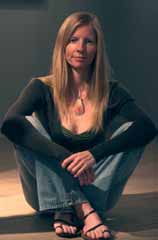
LANA SLEZIC
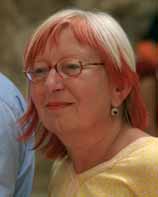
JANJA BEC-NEUMANN

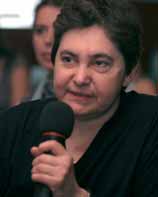
LISA DI CAPRIO
![]()
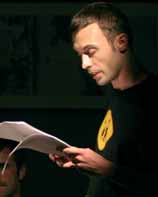
DALIBOR DAVIDOVIC
![]()
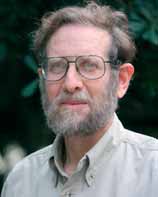
STEVEN SAGE


AERNOUT VAN LYNDEN

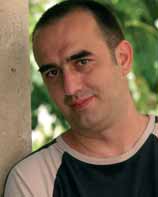
DINKO GRUHONJIC

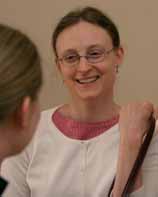
MICHELLE KELSO

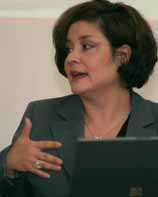
ASTA MARIA ZINBO
![]()
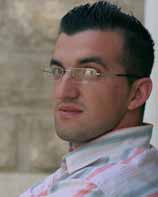
ELVIS SELIMOVIC
![]()
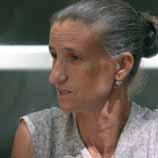
ESREFA ALIC

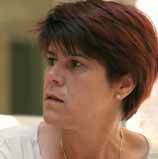
FATIMA FAZLIC
![]()
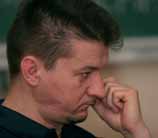
EDIN RAMULIC
LANA SLEZIC, (Canada), War Photographer
"FORSAKEN - THE LIVES OF AFGHAN WOMEN", Sunday, May 27, 2007, War Photo
Lana Slezic spent two years in Afghanistan, photographing Afghan women. Her lecture was about
her experiences documenting the oppressive conditions women are forced to live under.
JANJA BEC-NEUMANN, (Germany & Vojvodina),
Author of the concept and strategies of the
Course "War Crimes, Genocide and Memories"
"THE BYSTANDERS AND RESCUERS IN RELATION TO THE VICTIM AND PERPETRATOR",
Sunday, May 27, 2007, War Photo
This lecture is using comparative methodology (Armenian genocide, Holocaust, Argentina,
Rwanda, Cambodia, Bosnia and Herzegovina) with aim to explain basic categories related to
bystanders behavior and mostly it is based on Dan Bar-On’s text “The Bystanders in relation to the
victim and perpetrator: Today and during the Holocaust” (2002)
Ten Bystanders from the Holocaust
1. OPORTUNIST BYSTANDERS, The young industrial entrepreneur
2. STREET BYSTANDERS, The simple person in the street who got work, following his
unemployment during the economic crisis of the Weimar Republic
3. IDEOLOGICALLY ORIENTED BYSTANDERS, The physician who grew-up with the racial hygiene
theories
4. CARIEER BYSTANDERS, The academics, professors and artists
5. INSTITUTIONALIZED-RATIONAL BYSTANDERS, The Bishop of the local congregation, who knew.
6. PROFESSIONAL BYSTANDERS, The person who prepared the chemical supplies for the camps,
including the gas Ziklon B
7. PROFESSIONAL BYSTANDERS, BUT MORE “ENLIGHTENED ONE”, LESS CARIER ORIENTED, The
architect who built the gas chambers.
8. DISTANT BUSTANDERS, The well-established American or British, Gentile and Jewish people (as
well as Swiss or Swedish well-to-do citizens) who knew what was going on in Nazi Germany and
did not care.
9. OTHER-HATING BYSTANDERS, The farmers who lived in the vicinity of the work and dead camps
and all who have seen and have heard what was going on but hated or were indifferent to “every
other” who are not worthy of human support and empathy, especially those denounced by the
powerful (Church, military or government).
10. EMOTIONALY RELATED BUSTANDERS, Wives, parents, children of the perpetrators who believed
that they, perpetrators, were heroes, wonderful people, who were not capable of causing harm to
anyone.
LISA DI CAPRIO, (USA), Washington and Lee University Lexington, Virginia
“THE POLITICS OF MEMORY: FRANCE AND THE HOLOCAUST”, Monday, May 28, 2007, War Photo
This course examined the process by which nongovernmental organizations, historians, journalists
and lawyers compelled official French recognition of France's role in the Holocaust. We will also
consider the role of various forms of visual memorialization, such as monuments and museums, in
conveying the memory of the Holocaust from one generation to another. Finally, we will compare
the Memorial to the Shoah in Paris with the Memorial to the Martyred Jews of Europe in Berlin.
Suggested books:
(1) Susan Zuccotti, "The Holocaust, The French, and the Jews," (1999), paperback, $17.95 and
(2) Richard Golsan, editor, "Memory, the Holocaust, and French Justice: the Bousquet and Touvier
Affairs (1996), paperback, $24.95.
DALIBOR DAVIDOVIC, (Croatia), University of Zagreb, Music Academy
“THE MEMORY OF MUSIC”, Monday, May 28, 2007, War Photo
“Radical Jewish Culture” is the name of the ongoing project started in the early 1990s by
contemporary composer and musician John Zorn. The project enfolds a series of music albums
composed and played by different musicians and published on Zorn's New York-based label
“Tzadik”. In my lecture I'll present some of the music published in that series and take it as a starting
point for the analysis of the relation between music, memory and identity. In the case of “Radical
Jewish Culture” the role of the traditional music patterns for the production of new music on one
side and the memory of the Holocaust on the other side will be elaborated. Though my analysis will
be focused on that single case, my aim is to show that the issues that arise from it are singular, but
also more than that. Finally, in my lecture I'll discuss the political and ethical implications of the
case.
STEVEN SAGE, (USA), US Holocaust Memorial Museum, Washington D.C.
“SEPHARDIM AND THE HOLOCAUST IN SEE”, Tuesday, May 29, 2007, IUC
"BALKAN SOBRANIE: JEWS AND THEIR NEIGHBORS IN SOUTHEAST EUROPE"
A brief introduction to the civilization of the Sephardic Jews in the Balkans, and to that of the Ashkenazy
Jews in Romania during the early 20th century period of rising nationalism. Salonika is noted as the
cultural capital of Balkan Jewry; Bulgarian, Bosnian, and Serbian Jews maintained ties to Salonika. This is
followed by a review of the impact of the Balkan Wars (1912-1913), the Great War (1914-1918),
anti-Semitism and continuing ethnic unrest in the post-Great War decades.
"A GENOCIDAL SCRIPT"
German Nazism and Hitler's personal agenda were the active agents for turning Southeast European
anti-Semitism into an instrument of genocide. This lecture will introduce new empirical discoveries as
published in my book last year (Ibsen and Hitler; NY: Carroll & Graf, 2006). Copies of my book are
obtainable at a discount from Amazon.com; a paperback edition will be out in June or July, 2007. Readers
and reviewers of this book have acclaimed it for the crucial and unexpected historical discoveries it
presents. A Norwegian historian, Professor Hans Fredrik Dahl of the University of Oslo, wrote in "Dagbladet" (Oslo): "More thorough than anyone before him, Steven Sage has gone through the material
around the young Hitler and his literary sources. His work encompasses much new research and draws
conclusions in many different directions. That there was an actual line of influence between Ibsen and the
young Hitler is to me beyond doubt." (See attached for Dahl's op-ed of 11 June 2006, in Norwegian and
English.)
"DEALING WITH THE DEVIL"
Nazism offered territorial inducements to the countries of Southeastern Europe. The price was their
cooperation in identifying, expropriating, enslaving, and deporting the Jewish population of each country.
The detailed course of events is given for Romania and the Yugoslav component states, in 1941.
"THE HOLOCAUST MOVES SOUTH"
The events of the Holocaust are examined in Bulgaria and Greece. This lecture concludes with a review of
first Holocaust trial in history (Sofia, 1945), followed by an overview of Holocaust denial and memorial in
Bulgaria and the region as a whole.
AERNOUT VAN LYNDEN, (Holland), American University Blagoevgrad, AUB, Bulgaria
Wednesday, May 30, 2007, IUC
“WAR AND WAR CRIMES THROUGH THE EYES OF A WAR CORRESPONDENT”
The various problems and pitfalls correspondents face when confronted by war, both in general and
specific terms (in my case the wars in Lebanon, Iran-Iraq, Afghanistan, 1991 Gulf War and Yugoslavia). The
differences between the various branches of the media - print, television, radio and now the internet -
when covering wars. Does the general public really get a sound impression about a war being waged on
the other side of the world through journalism? And does journalism uncover war crimes?
“LIVING WITH MEMORY: THE PUBLIC AND PERSONAL EXPERIENCES OF A FOREIGN EYE-WITNESS”
Within this lecture I will try, through personal experiences, to explain how every war correspondent is
confronted by a certain local "memory", or understanding of the past (often mythical) and of how this can
affect his or her work. He or she is also confronted by such "memory" amongst the readers/viewers for
whom he/she is reporting and has to bear that in mind too. Quite separate to this is the question of one's
own memory and of being a witness in a court of law. I will describe my personal experience as a witness in
four trials at the ICTY. Finally I will try to deal with the question of living with the personal experience of 25
years spent in war zones - what effect that can have not just on our personal lives, but in our way of looking
at any new development, social, political, economic or cultural, in the world.
DINKO GRUHONJIC, (Vojvodina/ Serbia), Deutsche Welle Correspondent & Lecturer at University of Novi
Sad, President of Independent Journalists Association of Vojvodina
Wednesday, May 30, 2007, IUC
“SRDJAN ALEKSIC CASE AND MEMORIES IN TREBINJE AND SERBIA“
Srdjan Aleksic from Trebinje was murdered in his hometown in January, 1993. Four armed men, local
“chetniks” killed him in the center of the town, in front of local police station.
On January 21st four chetniks wanted to slaughter Bosniak Alen Glavovic in the centre of the town. Srdjan
stood up and said: “Leave that guy alone!” Chetniks were surprised and their anger was redirected: they
attacked Srdjan and started to beat him with their gun butts. Srdjan fell in a coma and six days later he
passed away on January 27th 1993.
“Srdjan died because of his humanity, because he wanted to protect a man, regardless of his nationality”,
said Srdjan’s father Rade Aleksic.
Everybody in Trebinje knew what happened on that January day, but almost no one wanted to talk about
it. Conspiracy of silence was finally broken thanks to initiative of my very good friend Mr. Ljubisa Gluscevic.
He told me this story; I published it in Beta News Agency from Belgrade.
After that, Mr. Dobroslav Chuk, the mayor of Trebinje, promised municipality will build Srdjan’s monument.
“He tried to protect a man and I’m very proud because of that”, concluded Mr. Rade Aleksic. Or, as my
colleague Nikola Gurovic once said: “Srdjan Aleksic was a firefly in the night!”
Concept of the lesson: Brief Introduction (10 min), documentary movie “Srdjo” (30 min), brief explanation of
the movie (5 min), discussion (15 min)
Objective: To discuss whether we can implement the story to the process of the facing with the past and reconciliation; to try to find similar stories in Bosnia-Herzegovina; to discuss is it better recipe to talk about
positive examples then always talk only about war crimes and criminals.
MICHELLE KELSO, (USA), Ph.D. Student, University of Michigan at Ann Arbour,
Wednesday, May 30, 2007, Art Radionica Lazareti
DOCUMENTARY "HIDDEN SORROWS"
Michelle Kelso, the guest author of the Seminar 'War Crime, genocide, Memory', is a doctoral candidate in
sociology at the University of Michigan. She explains:
«Before meeting survivors, I knew little about the Nazi persecution of Roma. Although an estimated 500,000 Roma perished in the Holocaust, research on the genocide of the Roma is paltry. Concerning Romania’s role in the destruction of Roma, almost nothing was available then in English or Romanian. That’s when I decided to concentrate my research on the tragedy of the Roma during the Holocaust. The film has been shown at cultural institutions and in several high schools across Romania and in the United States. It will be duplicated and sent to every Romanian high school to serve as an educational tool for teaching about the Holocaust and for discussion in civic education classes on topics such as xenophobia, racism, and discrimination. My hope for both my academic work and the film is to start a much-needed dialogue about the place of Roma in both Romanian and Holocaust history.»
“FIGHTING FOR TRUTH AND JUSTICE: THE WORK OF FAMILY MEMBERS OF THE MISSING”
Panel organized by the International Commission on Missing Persons (ICMP)
Thursday, May 31, 2007, IUC
Introductory remarks: ASTA MARIA ZINBO, Director, Civil Society Initiatives, ICMP
ELVIS SELIMOVIC, Association of citizens "Mothers of Srebrenica and Zepa Enclaves"
ESREFA ALIC, Association of Citizens "Women of Srebrenica"
FATIMA FAZLIC, Association of Women from Prijedor "Izvor"
EDIN RAMULIC, Association of Women from Prijedor "Izvor"
I. International Commission on Missing Persons (ICMP)
Family members of an estimated 13,000 missing persons from BiH still have no information
about the fate of their missing loved ones and live each day painfully searching for facts and
closure to this difficult chapter of their lives.
ICMP is an international organization that was created in 1996, following the G-7 Summit, in
Lyon, France, to address the issue of persons missing as a result of the different conflicts relevant to
Bosnia and Herzegovina (BiH), the Republic of Croatia (RH) and Serbia and Montenegro (SCG)
during the time period 1991-1995.
Mandate: ICMP endeavors to secure the co-operation of Governments and other authorities
in locating and identifying persons missing as a result of armed conflicts, other hostilities or
violations of human rights and to assist them in doing so. ICMP also supports the work of other
organizations in their efforts, encourages public involvement in its activities and contributes to the
development of appropriate expressions of commemoration and tribute to the missing.
Science in Service of Truth and Justice: Forensic Sciences
ICMP’s Forensic Science Department (FSD) has the primary responsibility within ICMP for
developing, implementing and managing the technical process of assisting governments in
exhumations, examinations and identifications of persons missing as a result of violent conflicts.
1. Telling the Story of a Mass Grave: Exhumations and Examination Program (E&E):
2. A Profile of the Missing: The Identification Coordination Division (ICD)
3. Irrefutable Evidence of Identity: DNA Laboratories
SYSTEM WIDE TRACKING
| Blood Sample Status | BiH | Kosovo | SCG | Total |
| Blood Samples Collected | 66360 |
11522 | 6035 | 83,917 |
| Number of Missing Individuals Represented by the Blood Samples Collected | 22687 | 3446 | 1962 | 28,095 |
| Bone Sample Status | BiH | Kosovo | SCG | Total |
| Bone Profiles in Database | 17360 | 2812 | 1427 | 21,599 |
| DNA Reports | BiH | Kosovo | SCG | Total |
| Total Number of Reports | 14650 | 2087 | 900 | 17,637 |
| Individuals Represented | 9586 | 1246 | 764 | 11,596 |
| Reassociation of Separated Skeletal Elements | 4665 | 706 | 123 | 5494 |
SANSKI MOST - PRIJEDOR
| Blood Samples Collected | 12237 |
| Number of Missing Individuals Represented by the Blood Samples Collected | 3631 |
| Bone Profiles in Database | 2994 |
| DNA Reports - ICMP Total Number of Reports | 2680 |
| Individuals Represented | 1567 |
| Reassociation of Separated Skeletal Elements | 1065 |
| Exclusion of Presumptive Cases | 48 |
| Reports in Review | 64 (Sa) |
| Submitted Reports | 2414 (representing 1514 different names) |
| Cases Closed | 1291 |
| Open Cases | 223 |
SREBRENICA
| Blood Samples Collected | 21091 |
| Number of Missing Individuals Represented by the Blood Samples | 7789 |
| Bone Profiles in Database | 6686 |
| DNA Reports - ICMP Total Number of Reports | 6658 |
| Individuals Represented | 4204 |
| Reassociation of Separated Skeletal Elements | 2292 |
| DNA Reports - Out of Country Matches | 126 |
| Number of Closed Cases | 3093 |
| Number of Bodies Buried | 2533 (2374 Potocari and 159 individual burials) |
Public Involvement: Civil Society Initiatives
The main objective of the Civil Society Initiatives Department (CSI) is to work with Associations of Missing Persons to help them raise awareness on the issue and to increase the Association members’ civic initiative and advocacy capacity to address the topic of missing persons as a human rights issue. Specifically through:
1. Empowerment: To ensure that associations of families of missing persons are strong, independent and fully engaged in
clarifying the fate of their missing relatives; implemented through project grants to family associations and training and
technical assistance.
2. Networking: To engage family associations in effective regional networks that address the specific rights and needs of
family members with missing relatives; implemented through conferences, meetings, and publications. A series of nine
regional conferences have been organized since 1998 and a Regional Coordination Board has been formed which includes
Srebrenica association representation.
3. Awareness: To work towards improved understanding of the missing persons issue and the situation of surviving family
members; implemented through activities addressing the legal, social, and economic rights of family members of the
missing, and raising public awareness about the missing persons issue as a human rights issue.
4. Mutual Understanding: To foster mutual understanding and a process of dealing with the past by members of
associations of families of missing persons regarding the disappearance of their loved ones and the violent conflicts that they
themselves survived through thematic workshops and conferences on dealing with the past and transitional justice.
Associations of families of missing persons have conducted a large number of activities over the years with the goal of
advocating towards decision makers for answers, collecting data, raising public awareness, and addressing the needs of their
members. The International Commission on Missing Persons has supported the efforts of these associations since 1998 with a
variety of technical and financial support in order to help them to reach their objectives.
Events in Srebrenica
Families of the missing from Srebrenica have been active in pursuing truth and justice since 1995. Main priorities of these and
other associations of families of missing persons have included finding and identifying missing persons, dignified burial and
memorial, prosecution of war criminals, and addressing the rights of surviving family members of the missing.
There are five associations of families of missing persons representing Bosniak relatives of missing persons from Srebrenica.
These include:
1. Association of citizens "Mothers of Srebrenica and Zepa Enclaves"/ Udruzenje "Pokret majki enklava Srebrenice i Zepe",
Sarajevo, headed by Munira Subasic. Other active members include Kada Hotic, Zumra Sehomerovic, Sabra Kolenovic,
Sabaheta Fejzic. Representing primarily families of the missing from Srebrenica, July 1995.
2. Association of Citizens "Women of Srebrenica"/ Udruzenje gradjana "Zene Srebrenice", Tuzla, headed by Hajra Catic.
Other active members include Nura Begovic, Sehida Abdurahmanovic. Representing primarily families of the missing from
Srebrenica, July 1995.
3. Srebrenica Mothers/ Udruzenje gradjana " Srebrenièke majke", Srebrenica, headed by Hatidza Mehmedovic. Other
active members include Aisa Omerovic, Suhra Malic, Samila Pasalic. Representing primarily families of the missing from
Srebrenica, July 1995. They were originally members of Mothers of Srebrenica and Zepa Enclaves, until Ms. Mehmedovic
returned to Srebrenica and managed to register a new association on 28 September 2002 at the district court in Bijelina. She
has 70 active members and many other less active members who live in villages who she tries to visit on a regular basis.
4. Association of Citizens "Mothers of Srebrenica and Podrinje"/ Udruzenje gradjana "Majke Srebrenice i Podrinja",
Vogosca, headed by Ibran Mustafic and Zineta Mujic. Representing primarily families of the missing from Srebrenica, July
1995.
5. Association of Citizens "Women of Podrinje"/ Udruzenje gradjana "Zene Podrinja"/ Ilidza, headed Suhra Sinanovic and
Kadefa Rizvanovic. Representing primarily families of the missing from Bratunac, May 1992, as well as people from Bratunac
who ended up in Srebrenica, July 1995.
- Core support has been provided for the activities of the association since 1999. Activities have included regular meetings with members and staff travel including following the exhumations, identifications, and burial process, participating in the development of the Srebrenica - Potocari Memorial Center and Cemetery, contacts with relevant
government officials, lobbying the government and international officials, as well as topics related to the legal and social
rights of surviving family members of the missing.
- In 1999, the association Mothers of Srebrenica and Zepa Enclaves proposed to conduct a survey of surviving family
members about where they would like their loved ones to be buried. With a grant through ICMP, the association developed
questionnaires and surveyed 10,197 missing person’s family members in Sarajevo Canton, Tuzla-Podrinje Canton and
Zenica-Doboj Canton. The surveyed persons could choose among one of the following locations: Sarajevo Canton, Tuzla
Canton (Ravni stanovi – Kladanj), or Srebrenica (Potocari). Nearly 90% of those persons surveyed selected Potocari as the
place where they wished for their loved ones to be buried.
- The Association Mothers of Srebrenica and Zepa Enclaves organized a series of roundtable discussions with other family associations and invited guests. On November 23, 2000 a meeting was scheduled on the topic of “Implementation of
the High Representative’s Decision.” On December 23, 2000, the third in the series of roundtables was held at which 22
association representatives selected a three-person coordinating group to represent the interests of family members in this
process.
- March 11, 2003, Round Table discussion on the theme “Between Truth and Justice, Memories and Hopes” by the association Mothers of Srebrenica and Zepa Enclaves in Sarajevo. Many distinguished local and international officials
participated in the discussions in order to inform families about the current status of the identification process and plans for
the development of the Srebrenica Potocari Memorial and Cemetery. The families continued to insist that the Battery Factory
that had been used as the United Nations base of the Dutch Battalion in Potocari /Srebrenica be designated as a memorial
site.
In a large ceremony on March 31, 2003 the first funeral and burial of 600 identified victims took place in Potocari.
- June 18, 2003 Roundtable Discussion on the topic of the “Place, Role, and Meaning of a Museum in Potocari”
- July 5, 2003 Roundtable Discussion was organized on the topic of “Truth About the Srebrenica Massacre” on with the
participation of the Hague Tribunal prosecutor involved in the Krstic case to present the evidence from the trial. At the July
11, 2003 commemoration a total of 282 identified victims were buried. The Potocari cemetery and memorial was officially
opened on September 20, 2003, including the burial of an additional 107 people.
- Support for "Postcard campaign - No Rights Without Justice, No Justice Without Morality" on the occasion of the December 10 anniversary of the signing of the UN Universal Declaration on Human Rights.
- Roundtable discussion in 2004 on the technical aspects of the identification of Srebrenica victims, especially from secondary gravesites.
- June 11, 2006 Conference "Justice for Victims" in Potocari - Srebrenica partial support for the organization costs
- Support for core operational costs of the association since 2000, the publication of a bi-monthly newsletter “Bulletin
Srebrenica” , and updating and maintenance of the association’s website and ongoing lobbying and contacts with families
- Monthly peaceful protests organized by the Association Women of Srebrenica in Tuzla on the 11th of every month where the members display the pillow cases embroidered with the names of their missing loved ones.
- Support for "Printing the pre-edited draft version of the book: "’The role of the international factors in Srebrenica: Chronology, comments and analysis of the events’" author Hasan Nuhanovic in 2005.
- Exchange visit to Kosovo in period April 25 - 29, 2005 for three representatives of Srebrenica FA's (Ajsa Bektic, FA
Women of Srebrenica, Tuzla; Kada Hotic, FA Enclaves, Sarajevo; Hatidza Mehmedovic, FA Srebrenica Mothers, Srebrenica).
Srebrenica Lawsuit
Nearly six thousand (5950) Srebrenica survivors are planning to file a lawsuit on June 4, 2007 to the court in the Hague against the government and ministry of defense of the Netherlands, as well as the UN for not preventing genocide. This would include one joint and 9 other lawsuits. Although according to Dutch law, the civil proceedings can be rejected. It is expected that they could be awarded indemnity or reach a settlement, although they believe that it is most likely that they would reach a settlement
Events in Prijedor, 1992
During the war 1992-1995, approximately 3278 non-Serb citizens were killed or went missing from the Prijedor area. To date approximately 1900 persons have been exhumed, but hundreds of bodies are still waiting to be identified. Surviving family members are still seeking the fate of more than 1300 persons. ICMP has worked closely with The Associations "Izvor" and “Bridges of Friendship” over the years.
II. Remarks by association representatives:
- Elvis Selimovic, Association of citizens "Mothers of Srebrenica and Zepa Enclaves" /Udruzenje "Pokret majki enklava
Srebrenice i Zepe"
- Esrefa Alic, Association of Citizens "Women of Srebrenica" /Udruzenje gradjana "Zene Srebrenice"
- Fatima Fazlic, Association of Women from Prijedor "Izvor"/ Udruzenje Prijedorcanki "Izvor"
- Edin Ramulic, Association of Women from Prijedor "Izvor"/ Udruzenje Prijedorcanki "Izvor"
III. Documentary films:
- "Serbia and Srebrenica 1995-2005” (2006) including stories of members of the Movement of the Mothers of the Srebrenica and Zepa Enclaves, produced by Youth Initiative for Human Rights in Serbia.
“Justice Requires Outreach” focusing on the work of the Tuzla and Banja Luka Chief War Crimes Prosecutors produced
by OSCE in co-operation with the XY Productions Sarajevo and the Film Director Refik Hodzic (planned but not shown due to
lack of time).
IV. Questions and Discussion
 TANJA MRDJA |
TANJA MRDJA, (USA), ERMA graduate 2005/2006 Thursday, May 31, 2007, IUC “RAPE; ASSYMETRICAL WARFARE?”
|
MARIO BEZBRADICA, (Croatia), ERMA graduate 2005/2006
“GENOCIDE PHOBIA IN SERBIA”, Canceled
The International Criminal Tribunal for the former Yugoslavia in The Hague has been dealing for years with the process of
bringing perpetrators of the crime of genocide in Srebrenica, in Bosnia and Herzegovina, 11 July – 19 July 1995, to justice. There
were trials and judgments and those convicted serve their sentences. The Serbian society, however, refuses to accept factual
truths of its deep involvement in the genocide in Srebrenica. Instead, a project of denial of genocide minimizes every effort of
recognizing the co-responsibility on the moral-political-metaphysical level. Moreover, one of the principal manufacturers of
truth transformation is the newspaper medium. Its daily dosage of denial is a powerful antidote to any self-initiated process of
confronting the legacy of genocide. The Hague Tribunal rendered its legal judgments, and the newspaper medium rendered
its sociopolitical dismissal of those judgments by means of disinformation and refinement of its forms, techniques and
methods of denial.
Analyzing the newspaper articles* in their relation to the denial of genocide it is noted that the print medium itself by its
confessional character of the inside story and the communal participation in its mosaic form reinforces the denial’s
determination to invalidate the explicitness of factual truths. The relativization, rationalization and normalization of the crime
of genocide are widely used forms in the project of denial taking advantage of and adding to the banality of indifference thus
obfuscating and trivializing the general public’s process of acknowledging political and moral guilt. The denial’s admissibility -
the banality of indifference - is twofold and visible in arguments with the strong moral/legal pathos of correctness as to show
that anything either proving or disapproving of genocide is sacred and consecrated and thus truly unbelievable.
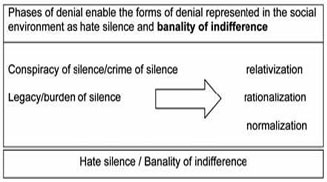 In addition, Krstic’s Defense Appeal arguments reiterated and
transfigured through the forms of relativization, rationalization and
normalization by the Serbian print media can be summarized as serial
of denial artifacts [a) relativization - men of military age are not
substantial part of the group b) rationalization - the prosecution of
In addition, Krstic’s Defense Appeal arguments reiterated and
transfigured through the forms of relativization, rationalization and
normalization by the Serbian print media can be summarized as serial
of denial artifacts [a) relativization - men of military age are not
substantial part of the group b) rationalization - the prosecution of
women, children and elderly is “broadened definition of genocide” c)
normalization - no intent to destroy]. These denial artifacts have been
produced and reproduced expansively and consistently in the Serbian
print media discourse to the extent of establishing falsehood as
factual truth.
In the continuum of misstating, misrepresenting, misinterpreting and amending factual truths as the analyzed newspaper
articles show ‘the other side of the story’ is deemed correct. As McLuhan concluded, newspaper is confessional in character
thus creating the ‘inside story’ by its mere form. Its mosaic form is communal and inclusive allowing press to make news thus
shaping and revealing group attitudes. Through its medium’s power of shaping group attitudes the deceptive newspaper
articles contributed to the blindfold on the eyes of the Serbian public already drowning in the stultification of moral
consciousness manifested in the banality of indifference. Finally, there cannot be any ‘solution’ for the Serbian denial of
genocide as long as there is the perception in Serbia – as seen in the Serbian print media – that there is no ‘problem’ to be
solved at all.
- EVIL NEVER BRINGS ABOUT GOOD, Vecernje Novosti, 26 May 2003:
23 PROSECUTORS AND JUDGES IN THE HAGUE ACT AS ONE, Politika, 28 May 2003: A24
EVIDENCE OR INFORMATION., Danas, 5 October 2003:7
THERE WERE CRIMES BUT GENOIDE NO!, Vecernje Novosti, 3 December 2003:8
THE BROADENED NOTION OF GENOCIDE, Politika, 21 April 2004: A1
BLACK HOLE IN THE JUDGEMENT, Vecernje Novosti, 22 April 2004: 7
PERSECUTION OF THE TRUTH OF SREBRENICA, Srpski Nacional, 21 April 2005: 12
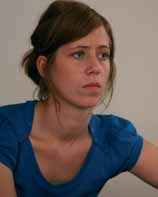
ANGELA WIESER
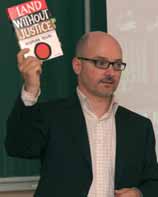
XABIER AGUIRRE
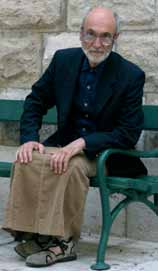
MARJAN VEJVODA
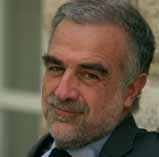
LUIS MORENO OCAMPO
ANGELA WIESER, (Austria), ERMA graduate 2005/2006
“JUSTICE FOR THE PAST AND THE FUTURE”Thursday, May 31, 2007, IUC
TRANSITIONAL JUSTICE
- Definitions of and Reasons for Transitional Justice
- Dilemmas of Transitional Justic
- Goals of Transitional Justice
- Means of Transitional Justice
EU-CONDITIONALITY AND EUROPEANISATION
TRANSIONTIONAL JUSTICE IN THE FORMER YUGOSLAVIA
- The ICTY
- Difficulties of and Critique towards the ICTY
- Achievements of the ICTY
- Other Transitional Justice Approaches in the Region
THE EU AS THE MAIN POLITICAL POWER BEHIND TRASNITIONAL JUSTICE
XABIER AGUIRRE, (Spain), ICC
“GENOCIDE, MEMORY AND INTERNATIONAL JUSTICE”, Friday, June 1, 2007, IUC
Since the times of ancient Greece mythology and philosophy it is known that memory can have
three main dimensions, as identity, as therapy and as knowledge. These three dimensions are
related in different ways to the international crimes (genocide, crimes against humanity and war
crimes) and the modern efforts to prevent them through justice.
A range of options have been utilized to deal with the memory of past crimes, from sheer denial,
amnesty or oblivion, to strict criminal justice, through middle-ground efforts of truth commissions.
The advantages and limitations of these options need to be discussed for each situation, but the
development of a global society is reducing the space for impunity; denying and forgetting the
crime is becoming more and more difficult.
The complex issues of fact and law surrounding international crimes will be discussed reviewing
different cases of ICTY (including Dubrovnik, Srebrenica, Prijedor and Sarajevo) and ICTR, the recent
decision of the ICJ on genocide in Bosnia-Herzegovina, the cases of the ICC, and different
experiences in Europe, Africa and Latin America.
MARJAN VEJVODA, (Croatia), University of Rijeka
“GENOCIDE IN THE AGE OF CULTURE OF CYNICISM AND THE SPECTACLE AS IDEOLOGY” Friday, June 1, 2007, IUC
To research genocide in the light of science in the age of “Culture of Cynicism”, and “Spectacle as
Ideology”, and ”Three Nemesis of Creativity” means to have a very real doubts weather any
understanding and restraining of this “global phenomenon” can be achieved. All three
characteristics of our age strongly suggest the validity of La pensee traditionnelle which
unsparingly criticizes contemporary world but contrary to most of the critiques of the
contemporary civilization traditionalists do not rely on “humanist” and “progressive” values but on
the values of the Integral Tradition, understood as the “total phenomenon” to which all the aspects
of social, political and cultural life are subordinate.
General censorship and control of knowledge which is delivered to mankind through educational
system over the ages is the main reason why the world is in the shape it is now and the one most
devastating being global management of violence and terrorism.Censorship and control of knowledge is the strongest evidence of the traditionalist view of
metaphysical history which has established the existence of clandestine (occult) centre of human
history which, in addition, consists of two opposite parts.
LUIS MORENO OCAMPO, (Argentina), Chief Prosecutor of ICC, Saturday, June 2, 2007, IUC
Talks with Luis Moreno Ocampo
“ICC AND INTERNATIONAL JUSTICE”
“FROM ARGENTINA TO ICC”
WADE GODDARD, New Zealand, War Photo Director and Exhibition’s Curator, Dubrovnik,
Croatia:
“WAR PHOTOGRAPHY AND MEMORY: RON HAVIV’S BLOOD AND HONEY”
DINKO GRUHONJIC, University of Novi Sad, Vojvodina/ Serbia:
“VIVISECT: DOCUMENTS ON RON HAVIV’S EXHIBITION ‘BLOOD AND HONEY’ IN NOVI SAD 2002”
JANJA BEC-NEUMANN, Germany& Vojvodina, Course Author and Course Co-Director:
“VICTIMS, PERPETRATORS, BYSTANDERS AND RESCUERS: COMPARATIVE APPROACH BASED ON THE ARMENIAN GENOCIDE, THE HOLOCAUST, CAMBODIA AND RWANDA”
STEVEN SAGE, US Holocaust Memorial Museum, Washington D.C, USA:
”SEPHARDIM AND HOLOCAUST IN THE BALKANS”
DALIBOR DAVIDOVIC, University of Zagreb, Croatia:
“THE MEMORY OF MUSIC: GRAY ZONES OF MUSIC”
ICMP/ International Commission on Missing Persons, Sarajevo Office, Bosnia and Herzegovina:
“FIGHTING FOR TRUTH AND JUSTICE: THE WORK OF FAMILY MEMBERS OF THE MISSING”
VIOLETA BURIC-MILOSEVIC, Civil Society Initiatives, ICMP
SABRA KOLENOVIC, Association of Citizens “Mothers of Srebrenica and Zepa Enclaves”
HATIDZA MEHMEDOVIC, Association of Citizens “Mothers of Srebrenica”
AHMET GRAHIC, Association of Citizens “Families of Missing Persons-Zvornik”
NAIDA MEHMEDBEGOVIC, Bosnia and Herzegovina, Ph.D. Candidate, University of Hamburg
“WEISSEN FLECKEN KEINE CHANCE”
DINKO GRUHONJIC, University of Novi Sad, Vojvodina/ Serbia:
”SRDJAN ALEKSIC CASE AND MEMORIES IN TREBINJE AND SERBIA”
“WAR PHOTOGRAPHY AND MEMORY: RON HAVIV’S BLOOD AND HONEY”
DINKO GRUHONJIC, University of Novi Sad, Vojvodina/ Serbia:
“VIVISECT: DOCUMENTS ON RON HAVIV’S EXHIBITION ‘BLOOD AND HONEY’ IN NOVI SAD 2002”
JANJA BEC-NEUMANN, Germany& Vojvodina, Course Author and Course Co-Director:
“VICTIMS, PERPETRATORS, BYSTANDERS AND RESCUERS: COMPARATIVE APPROACH BASED ON THE ARMENIAN GENOCIDE, THE HOLOCAUST, CAMBODIA AND RWANDA”
STEVEN SAGE, US Holocaust Memorial Museum, Washington D.C, USA:
”SEPHARDIM AND HOLOCAUST IN THE BALKANS”
DALIBOR DAVIDOVIC, University of Zagreb, Croatia:
“THE MEMORY OF MUSIC: GRAY ZONES OF MUSIC”
ICMP/ International Commission on Missing Persons, Sarajevo Office, Bosnia and Herzegovina:
“FIGHTING FOR TRUTH AND JUSTICE: THE WORK OF FAMILY MEMBERS OF THE MISSING”
VIOLETA BURIC-MILOSEVIC, Civil Society Initiatives, ICMP
SABRA KOLENOVIC, Association of Citizens “Mothers of Srebrenica and Zepa Enclaves”
HATIDZA MEHMEDOVIC, Association of Citizens “Mothers of Srebrenica”
AHMET GRAHIC, Association of Citizens “Families of Missing Persons-Zvornik”
NAIDA MEHMEDBEGOVIC, Bosnia and Herzegovina, Ph.D. Candidate, University of Hamburg
“WEISSEN FLECKEN KEINE CHANCE”
DINKO GRUHONJIC, University of Novi Sad, Vojvodina/ Serbia:
”SRDJAN ALEKSIC CASE AND MEMORIES IN TREBINJE AND SERBIA”
 |
 |
 |
 |
 |
 |
| Richard Goldstone 2006 |
Aernout Van Lynden 2006 |
Dan Bar-On 2005 |
Sonja Biserko 2005 |
Xabier Aguirre 2004 |
Asta Zinbo 2004 |
